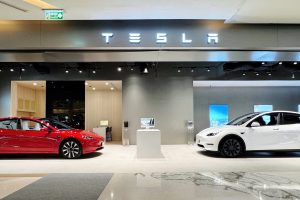- 🚗 Charging Woes in Philadelphia: An Uber driver’s struggles with EV charging in Philadelphia highlight the impact of city vehicles hogging local chargers, causing productivity and availability issues for private drivers.
- 🏙️ City’s Planning Oversights: Despite having a 261-vehicle EV fleet, the city installed only 107 EV chargers, with some poorly located and others allocated to departments that don’t yet have EVs. The lack of chargers for the department with the most EVs compounds the problem.
- 💡 Lessons from Other Cities: Philadelphia’s attempt to emulate another city’s plan (Columbus, Ohio) without effective implementation demonstrates the importance of thorough planning and not just forming committees.
- 🚗 Take Home Cars Challenge: The challenge of take-home EVs, especially for emergency response vehicles, requires employers to find innovative solutions for charging, such as curb charging and pre-payment for home charging.
- ⚡ Employer Responsibilities: Employers must consider ways to incentivize employees for home charging, cover installation costs, and potentially offer ownership of charging stations based on work tenure.
- 🛠️ Avoiding Strain on Public Infrastructure: Employers are urged to install their own DCFC stations to alleviate the strain on public charging infrastructure, ensuring city-owned vehicles have dedicated and convenient charging options.
Electric Vehicle (EV) adoption is on the rise, bringing both promises and challenges. A recent tale from the streets of Philadelphia unveils the intricacies of EV charging and the ripple effects of municipal planning. In this blog post, we delve into the charging woes faced by an Uber driver and dissect the city’s planning oversights, drawing valuable lessons for a future-forward EV infrastructure.
Charging Woes in Philadelphia
The story begins with an Uber driver in Philadelphia contemplating a return to gas due to charging struggles. The culprit? City vehicles monopolizing local chargers, impacting private drivers’ productivity and access to essential charging infrastructure.
City’s Planning Oversights
Philadelphia, with a substantial 261-vehicle EV fleet, installed a mere 107 EV chargers. Poorly located chargers and allocation to departments without EVs exacerbate the problem. Notably, the department with the highest number of EVs received no chargers, forcing 115 vehicles to rely on public charging stations.
Lessons from Other Cities
Philadelphia’s missteps echo the importance of comprehensive planning. Attempting to replicate another city’s plan (Columbus, Ohio) without meticulous execution highlights the pitfalls of committee-formed strategies over detailed planning.
Take Home Cars Challenge
The challenge extends to take-home EVs, especially emergency response vehicles. Employers must innovate solutions like curb charging and pre-payment for home charging to ensure the seamless integration of EVs into their fleets.
Employer Responsibilities
As stewards of EV adoption, employers bear responsibilities. Incentivizing employees for home charging, covering installation costs, and potentially offering charging station ownership based on work tenure emerge as crucial strategies.
Avoiding Strain on Public Infrastructure
To prevent strain on public charging infrastructure, employers are encouraged to establish their DCFC stations. This strategic move not only ensures dedicated charging options for city-owned vehicles but also contributes to a more sustainable and efficient charging ecosystem.





